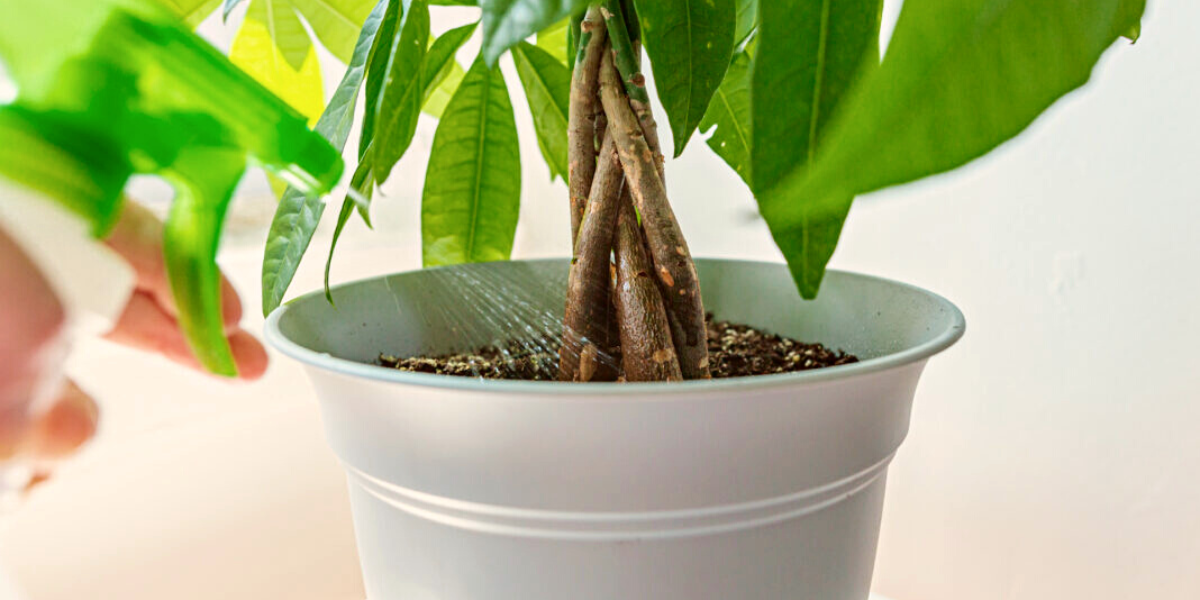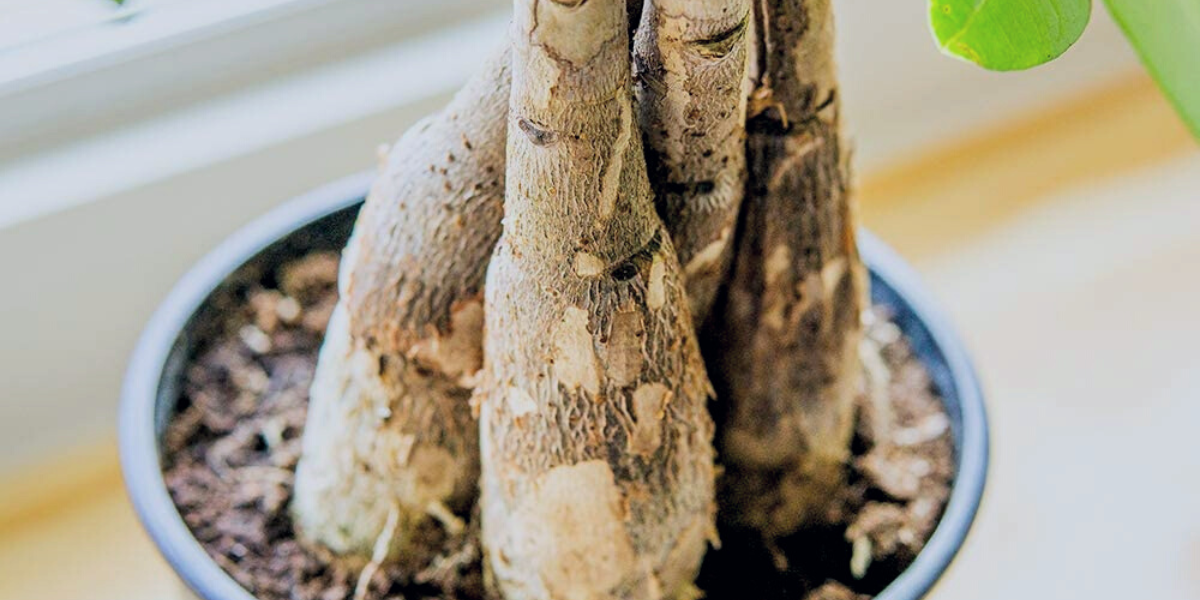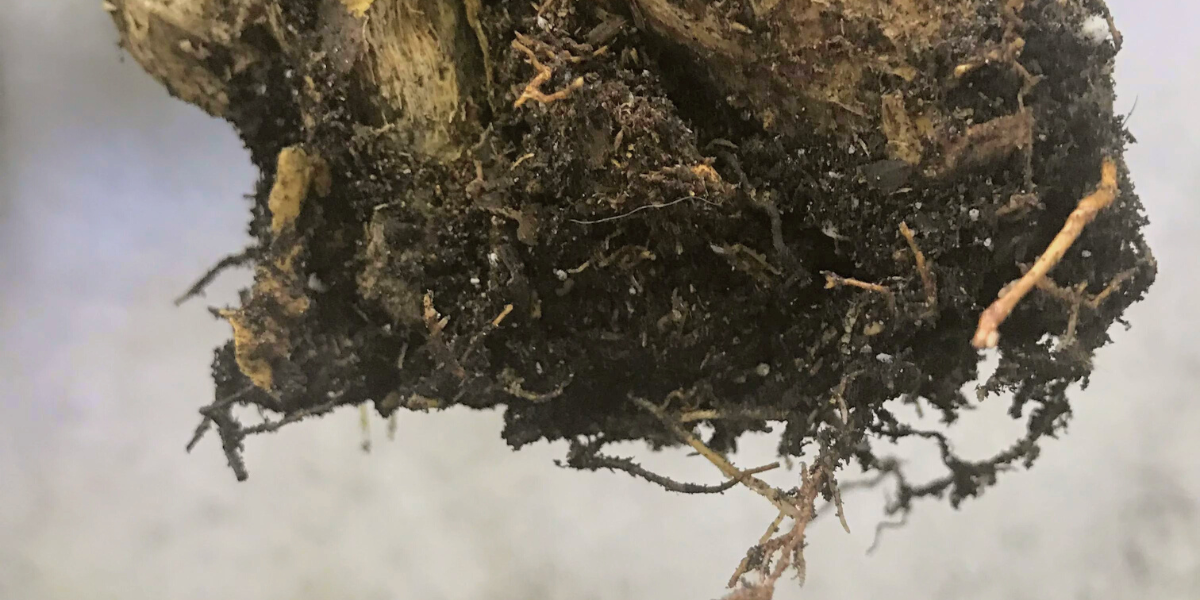The money tree (also scientifically called Crassula ovata or jade plant) is a fairly common succulent shrub thanks to its extreme ease of care. Because of it, it’s called a flower for the lazy, as it thrives in the absence of due attention from its owner, unlike many other species. The money tree is rarely susceptible to diseases and pests. However, even such a robust plant can have problems.
The most common is money tree root rot, which in advanced stages can destroy the flower completely. In this article, you will learn what gardening mistakes lead to the appearance of this disease, how to save your favorite plant, and how to prevent rot from appearing again.
Money Tree Root Rot Overview
The term “money tree” refers to a large group of plants called succulents. They have special fabrics that accumulate moisture to maintain viability in drought conditions. As you can imagine, thanks to it, they are resistant to the lack of regular watering. However, this property can lead to jade plant diseases and catastrophic consequences due to overwatering. However, even with severe damage, you can cure the flower if you act correctly.

Most often, due to a large amount of moisture in the ground, the roots, and with them, the stems and leaves, begin to rot. Besides, there is also the possibility of the appearance of fungal diseases that feel good in a humid environment. They can aggravate the condition, and if you work carelessly with flowers, they can also infect other plants. That is the main reason that causes money tree root rot is improper care. It may be:
- excessive watering;
- too low temperature in the room;
- incorrectly selected pot and soil.
The money tree is quite durable, so nothing bad will happen to it if you overwater it once. However, the constant presence of roots in the moist ground leads to rotting processes. Metabolism is disturbed since oxygen is not supplied to the plant’s lower part. The Crassula ovata is native to South Africa, where sandy soils do not retain moisture well. That is, it is not accustomed to frequent watering. Excessive humidity also causes the ground in the pot to be compressed into a firm lump that sticks tightly to the roots and also prevents oxygen penetration.
The rate of soil drying, of course, is also affected by the low temperature in the room. If the place where the money tree stands is cold or drafts are constantly blowing, it is highly likely that moisture does not have time to evaporate from the pot, leading to the appearance of root rot. Experts recommend moving plants accustomed to growing in warm climates away from windows and doors during the winter months, so they don’t suffer from the cold. Also, do not water the flower with cold water. It is advisable to let the water warm up to room temperature. Otherwise, your jade plant is in danger of hypothermia.
The state of the soil in which the tree grows also affects its health and beauty. If there are many pieces of expanded clay and organic matter in it, the ground will retain moisture, adversely affecting the plant state. Also, if you used old potting soil leftover from other flowers with money tree root rot, chances are there are pathogenic bacteria left in it that will quickly infect the new plant. That is why when using an old mixture, you should decontaminate it, for example, heat it in the oven, freeze it, or treat it with fungicides to stop the transmission of root rot.
You also need to keep in mind that the money tree has a very small root system compared to the aboveground part, which is quite typical for all succulents. It is essential to choose the right pot; it is better if it is low but wide. Containers that are too small cause the roots to curl up into a tight ball, and large ones fit too much soil, which takes a long time to dry completely.
Since the money tree does not have a very voluminous and branched root system, rot can very quickly destroy it completely. That is why it is necessary to inspect plants regularly to detect root rot early and prevent the development of plant diseases such as Fusarium, Sclerotinia, or Verticillium wilt. Since the main processes take place inside the pot, that is, underground, it can be difficult to determine the onset of root rot. However, the poor condition of the roots directly affects the appearance of the upper part, so you need to be more attentive to your money trees.
Jade Plant Root Rot Symptoms and Diagnosis
The money tree receives its main nutrition through its roots. For this reason, if something is wrong with them, it is reflected in the leaves and branches. The upper part becomes sluggish and soft to the touch; the stems and trunk do not hold their shape well and can bend under the weight of the leaves. The first changes can be seen on the lower tiers, the leaf blades turn yellow and begin to fall off, but this effect rises higher over time.
You may also notice money tree stem rot if the roots are damaged. Pay attention to the lower part of the trunk: it becomes much thinner, covered with mucus, and begins to exude an unpleasant odor. The tree’s outer layer (bark) may flake off when the disease is advanced. During the winter and rainy months, when the ambient temperature is low and there is not enough light, the likelihood of root rotting is higher.
By the way, aerial roots, which the money tree can release from stems or branches, can also serve as a signal of high humidity. Suppose you water the flower moderately and provide a good drainage system. In that case, there is still a chance that the moisture level under the leaves is higher than necessary due to evaporation. Aerial roots can also appear during rainy seasons, in regions with high air humidity, and in rooms where windows constantly fog up. While they are not bad, they signal to you that the climate in the room needs attention and control on your part. If you do not notice their appearance, you are likely to miss the beginning of the root rot development.

If you begin to notice the symptoms described that affect the plant’s appearance, you need to make sure that root rot is present. You will have to remove the flower from the pot to do it. Many beginner gardeners are afraid to do it for fear of damaging the lower part. You shouldn’t worry about it. The fact is that a healthy money tree will quickly recover after that, and with a diseased plant, you’ll still have to remove dead parts. In affected flowers, the roots are brittle, slimy, give off a strong smell of decay, and are dark in color, usually dark brown or black.
Root rot, leaf swelling, and softening of stems can result from both improper watering and other diseases. If you have little experience with plants and find it difficult to identify different types of diseases, use our application for classification. It not only determines the type of flower but also helps you understand what is wrong with it.
- For photos, it is desirable to place the flower in a well-lit area. You can also use images from your device’s gallery if you wish.
- Make photos of the whole money tree and each damaged part (including the roots) separately. Try to get rid of the soil carefully so that the diseased roots are clearly visible.
- Add several pictures to the app, and the AI will analyze them and suggest the most likely types of diseases. If your flower does indeed have root rot, it will be the first one on the list with the highest score. Other possible options will be presented below.
Based on the received data, you can choose the optimal treatment system. Remember that this disease progresses quite quickly, and it is crucial to identify it in its early stages. So you can save your adult money tree. If the money tree is too badly damaged, the best thing is to separate a few leaves and root them and destroy the rest of the flower. It is an extreme measure, so it is better not to bring it to it. After detecting the first signs of root rot in the money tree, you should immediately start curing it.
Money Tree Root Rot Treatment
In most cases, the cause of this disease is the wrong watering regime, so the soil does not dry out. In this case, the main thing you need to do is to immediately stop watering the plant and give the ground enough time to dry out. If you manage to notice root rot at the initial stage, such natural treatment is the best option. The lower part of the flower will recover by itself. You just need to adhere to the correct irrigation schedule in the future.
If you believe that the disease has passed into an advanced stage and simply drying the soil is not enough, you will have to get rid of some of the rotted roots. Here is a step by step guide to processing the plant:
- Take a garden pruner, sharp scissors, or a knife and disinfect them. It will remove any organic residue that may be on them.
- Take the plant out from the pot and carefully remove the pieces of ground from the roots. Don’t worry if you break some of them. When the money tree has root rot, they become extremely fragile.
- Rinse the bottom of the flower under running water, washing off the soil and rotten pieces.
- Trim off any damaged roots. When dealing with root rot, be prepared to remove a lot of it. It is dangerous to leave damaged parts, as they can provoke a relapse. It’s better to cut off the excess.
- Together with the rotted roots, part of the leaves should also be removed. Depending on the root rot damage degree, it can be a third or even half of the crown. It will lighten the load on the roots, which will have to supply nutrients to fewer leaves.
- Clean roots should be treated with fungicide. If it is not available, a weak solution of potassium permanganate is suitable for these purposes as it is a natural remedy against many diseases.
- Sprinkle the disinfected money tree’s parts with crushed activated carbon to speed up the healing of the cuts. Do not plant it immediately in the ground, but let the roots dry a little (about a day) in the air.
After processing the money tree, you can repot it. It is highly desirable to use a new soil explicitly made for succulents. However, if you don’t have one, you can reuse the ground. But you need to disinfect it from root rot using one of the methods that suit you:
- freeze it for a few days;
- keep the soil over steam for 30-40 minutes;
- bake it in the oven for about half an hour at a temperature not exceeding 200°F;
- treat it with a fungicide or potassium permanganate.
The best option is to use two methods at once. For example, freeze the soil, then let it thaw, and treat it with a fungicide. Keep in mind that such practices also destroy beneficial bacteria along with pathogenic organisms. Therefore, the soil will have to be “populated” with good microorganisms with the help of fertilizers.

As you can see, this method, although it can stop the disease cycle, is time-consuming. The easiest option is to buy a ready-made mixture. It should contain beneficial microorganisms, sand, gravel, and perlite, and at the same time, there should be no organic elements such as clay that retain moisture. Instead of expanded clay, which has high moisture absorbing properties, it is better to put pebbles, brick chips, or perlite on the pot bottom. They will let the liquid through. If you have enough knowledge about the characteristics of plants, you can make up the soil mix yourself.
When choosing a new pot, be sure to consider the size of the remaining roots. The container should be only a third larger than the root system. You can use an old pot if you wish, but it also needs to be thoroughly washed and disinfected from money tree root rot. Ceramic containers help retain moisture in the soil, so it is better to choose plastic ones. The main thing is to choose the right size so that it does not tip over when the money tree grows.
Since the money tree is quite tenacious, it does not need to be fed too often. Moreover, you should not use fertilizers right after repotting. It is best to give the flower some time (a month and a half) to get used to a new place. You can feed the plant with specialized fertilizers for succulents when fresh leaves appear. If you used ready-made soil from an airtight package, it is moist enough that it does not require watering. Water the jade plant only when the top layer is completely dry.
Leave a Reply
You must be logged in to post a comment.